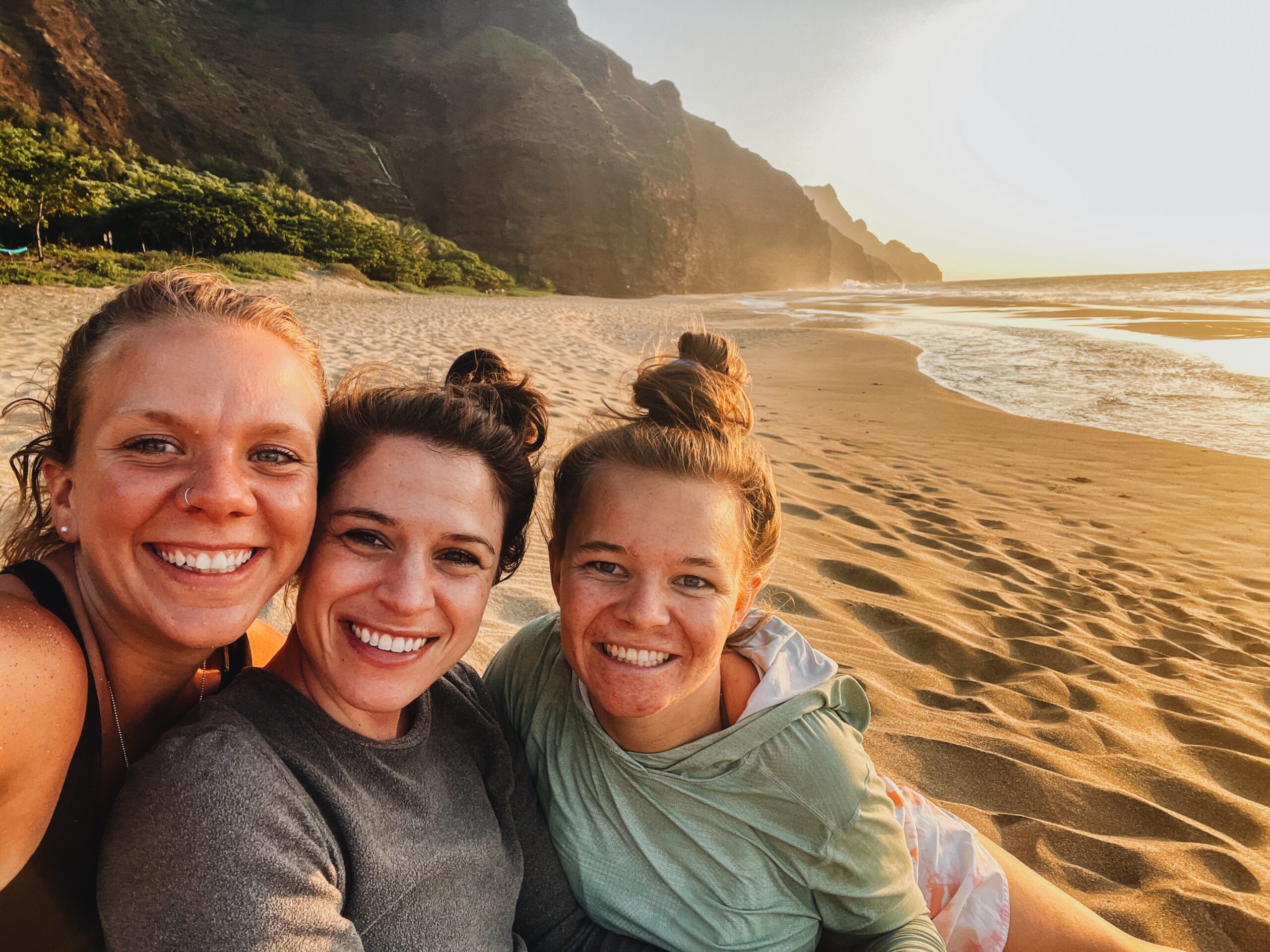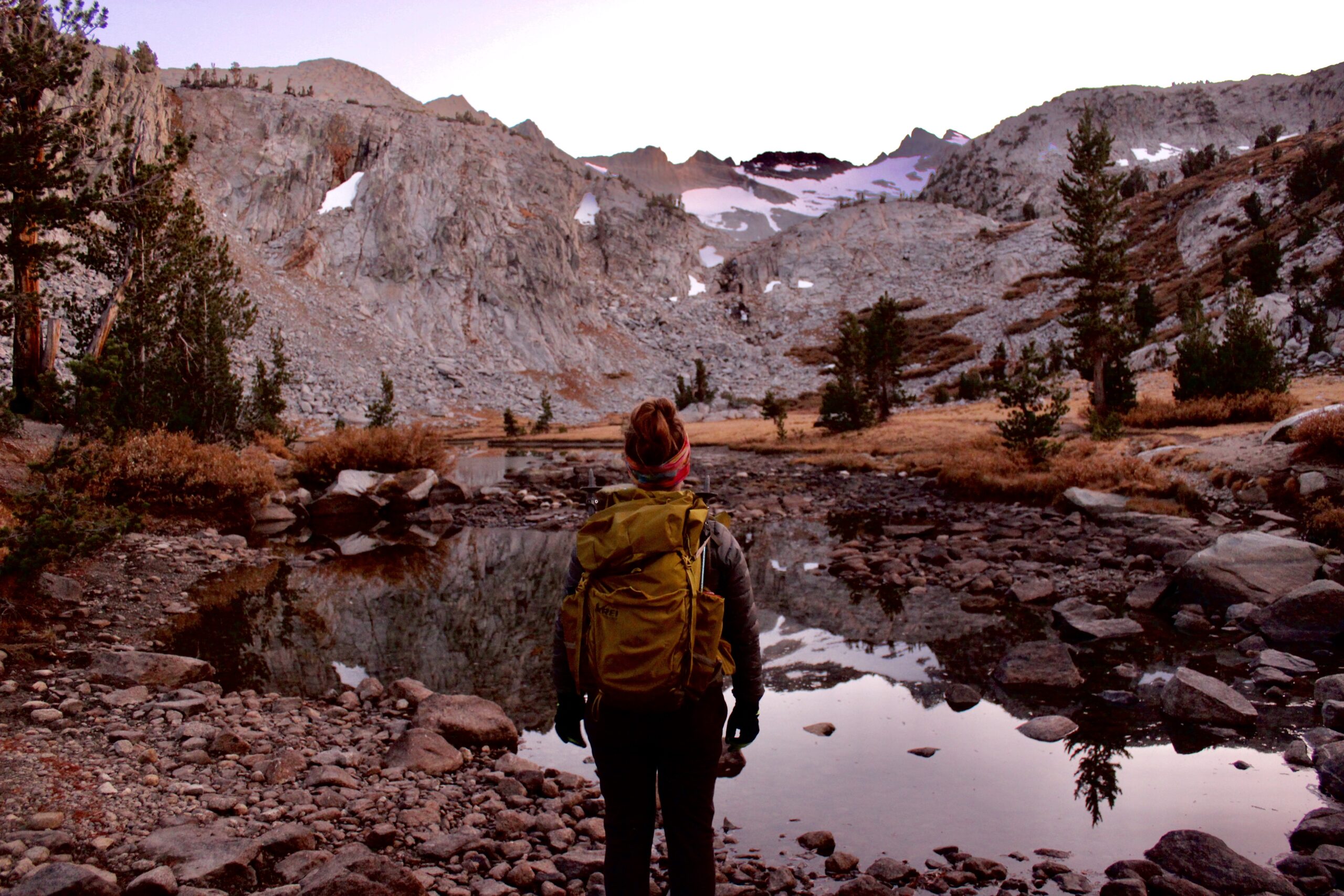Backpacking Kauai: Napali Coast to Kalalau Beach
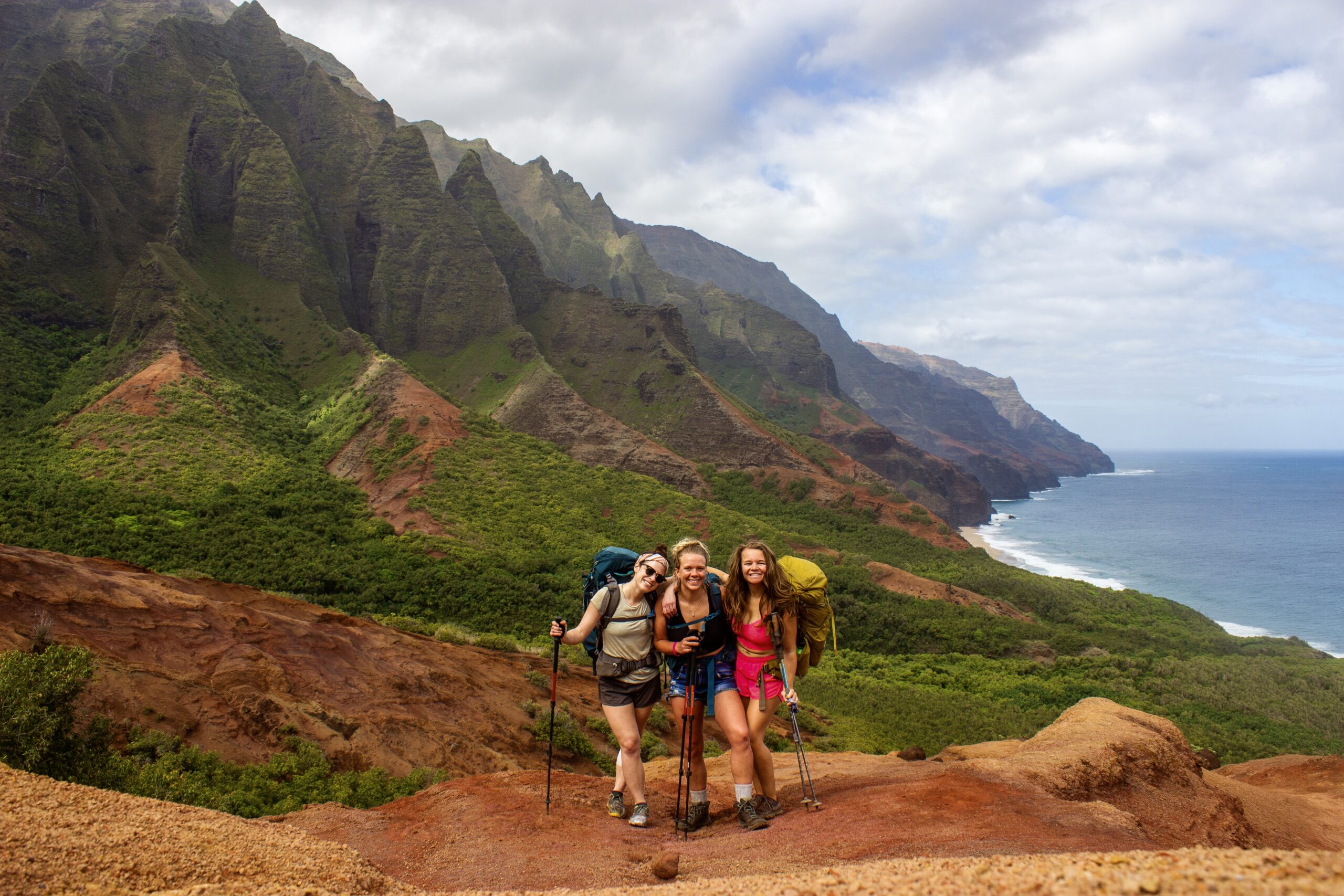
With more than 250 nights of backcountry wilderness camping under my belt, it means a lot when I say that camping at Kalalau Beach is one of my favorite places I’ve camped in the whole world. (And what if I told you I’m not really a beach person?!) That’s just how magical backpacking Kauai was.
When I think back to hiking the Kalalalu Trail along the Napali Coast and camping on Kalalau Beach I still get goosebumps. The breathtaking views were non-stop as we hiked the 22 miles of rugged coastline alongside lush green mountains that rise high above the bright blue waters of the Pacific Ocean.
Best of all, you can only reach Kalalau Beach by boat or by hiking the challenging but rewarding coastal Kalalau Trail; remote, out of cell service, and unaccessible by roads – just pristine Hawaiian coastline.
Backpacking Kauai – Kalalau Trail Details
| Distance | 22 mi, 35.5 km out & back |
| Time | 2 – 5 days |
| Location | Napali Coast, Kauai, Hawaii |
| Starting/Ending Point | Ke’e Beach, Kalalau Trailhead, Haena State Park |
| Difficulty | Difficult |
| Elevation Gain/Loss | ~6,500 ft, 1980 m gain & loss |
| High/Low Point | ~850 ft, 260 m to 0 ft, 0 m, sea level |
| Terrain | Established trail the whole way with steep ups and downs. Narrow trail with cliff drop-offs. Some vegetation grows over the trail. It gets very slippery when wet which makes the terrain more difficult. A few decent-sized stream crossings. Do not cross streams during rain storms because flash flooding is highly dangerous. |
| Permit Required | Yes – for camping and parking at the trailhead |
| Guide Required | No |
| Book Camping Ahead? | Yes – reservations open 90 days in advance |
| Campsites are Established? | Yes – Kalalau Beach and Hanakoa Campground are the only places you can camp. They have composting toilets. No running water, you must filter from streams. |
| Lodging/Services | None |
| Highlights | Kalalau Beach, Crawlers Ledge, Hanakoa Valley, Hanakapai Beach |

When to Backpack Kauai (Best time of year)
The island of Kauai only has two seasons: the dry and the rainy/wet season. The dry season spans from April to October and the wet season runs from November to March with December and January receiving the most rain.
Intense rain leads to dangerous flash flooding creating treacherous streams and river crossings. Therefore, the best time for backpacking Kauai is during the dry season from April to October. Of course, there is always the chance of rain as Kauai receives over 460 inches of rain throughout the year. Follow all protocols when flash flooding occurs and don’t cross muddy streams.
Backpacking Kauai’s Kalalau Trail Map
The Kalalau Trail is a 22-mile out & back trail starting at Ke’e Beach and stretching to Kalalau Beach in Na Pali Coast State Park.

Kalalau Trail Difficulty: Challenging & Dangerous?
The famous Kalalau Trail is a strenuous and riveting hiking trail. Many people rate the trail as one of the most dangerous hikes in the world because of the exposure, drop-offs, and steep ascents and descents. When combined with rain the trail is even sketchier. However, it is a fairly well-established hiking trail.
We found that we moved at a slower mile-per-hour pace than on other hikes we’ve completed. We stopped often to take many photos of all the scenic views but we found that it was a challenging trail. Over the 22 miles the trail gains and loses over 6,000 feet of elevation with many long ups and steep descents. Parts of the trail have vegetation growing across the trail. When the trail is muddy, it’s slippery.
Stream crossings quickly flash flooding following intense rain up high in the mountains. Sometimes it’s not raining at the crossing but the rain from the higher mountains floods down quickly. When the water is brown, do not cross it. These streams become very dangerous so it’s best to wait it out.
Given the terrain and elevation gain and loss, I’d recommend the Kalalau Trail to experienced hikers. Previsous backpacking experience is helpful but we met many people who were backpacking for their first time!
Backpacking Kauia’s Napali Coast Permit
When backpacking Kauai’s famous Napali Coast, camping permits and parking reservations are required. Logistics can be a bit confusing so here’s the breakdown.
Backpacking camping permits
- Camping permits are required to camp along the Kalalau Trail. Obtain these backcountry wilderness camping permits in advance from Napali Coast State Wilderness Park.
- Permits are available 90 days in advance.
- Permits are only available online through the valid Napali Coast State Wilderness Park website here.
- Camping permits are only issued for Kalalau Valley but you can camp at Hanakoa campground (6 miles from the trailhead) for one night on your way to Kalalau Beach and one night on your way out if you have enough days on your permit to do so.
- Camping is only permitted at Hanakoa and Kalalau Beach
- Permits are $25 per person per night for Hawaii Residents and $35 per person per night for non-residents.
- If you have a camping permit then you do not need to obtain a separate Haena State Park permit.
Overnight Parking Permits
When backpacking Kauai, overnight parking permits are required for all cars parking at Haena State Park (the Kalalau Trailhead). Acquire permits online at GoHaena in advance. To acquire an overnight parking permit you must already have a Kalalau camping permit.
There is limited overnight parking, so book up to 90 days out in advance. If you cannot obtain a camping permit there are also shuttle options to the Kalalau Trailhead (explained below).
Day Hiking Permits
If you’re only planning to hike the Napali Coast on a day hike then you can obtain a Haena State Park entry pass.
With a day-use permit, you can only hike 2 miles to Hanakapai Beach. The full Kalalau Trail permit is required if hiking past this beach, even if you don’t plan to camp.

Reaching Kalalau Trailhead to trailhead
The Kalalau Trailhead starts at Ke’e Beach in Haena State Park. This is located on the north side of Kauai, about 7 miles west of Hanalei. The main options to reach the trailhead are driving a personal car and obtaining a permit, taking the park shuttle, or getting dropped off.
Personal car & parking permit
If you have a Kalalau camping permit then you can purchase overnight parking for the Kalalau Trailhead at Ke’e Beach. Book your overnight camping permit in advance online here, after obtaining your camping permit.
The parking lot opens at 6:30 am for hikers with Kalalalu trail camping permits.
Take the park shuttle
The shuttle is the easiest way to access the park if you don’t have a car and don’t want to worry about logistics. The Waipā shuttle picks up from the Waipa Park and Ride, a mile west of downtown Hanalei. You can park here free from 6 am to 6 pm daily. (Overnight vehicles will be towed). Shuttles run every 20 minutes daily from 6:20 am – 5:40 pm.
To guarantee a seat and specific departure time, reserve your shuttle online in advance. Shuttle reservations are $40 round trip for ages 16+, $25 round trip for ages 4 – 5, and 0 – 3 are free on lap. Reservations open 30 days in advance. IDs are checked so you cannot share or resell reservations.
Get dropped off
If you have a camping permit you can get dropped off and picked up at the park entrance. You must show an ID that matches your permit name. There is no cell service in the park so arrange your pick-up plans in advance.
Napali Coast via the Kalalau Trail Hike Breakdown
Here’s a breakdown of notable viewpoints, stream crossings, beaches, waterfalls, and trail details for the famous Kauai backpacking trip.
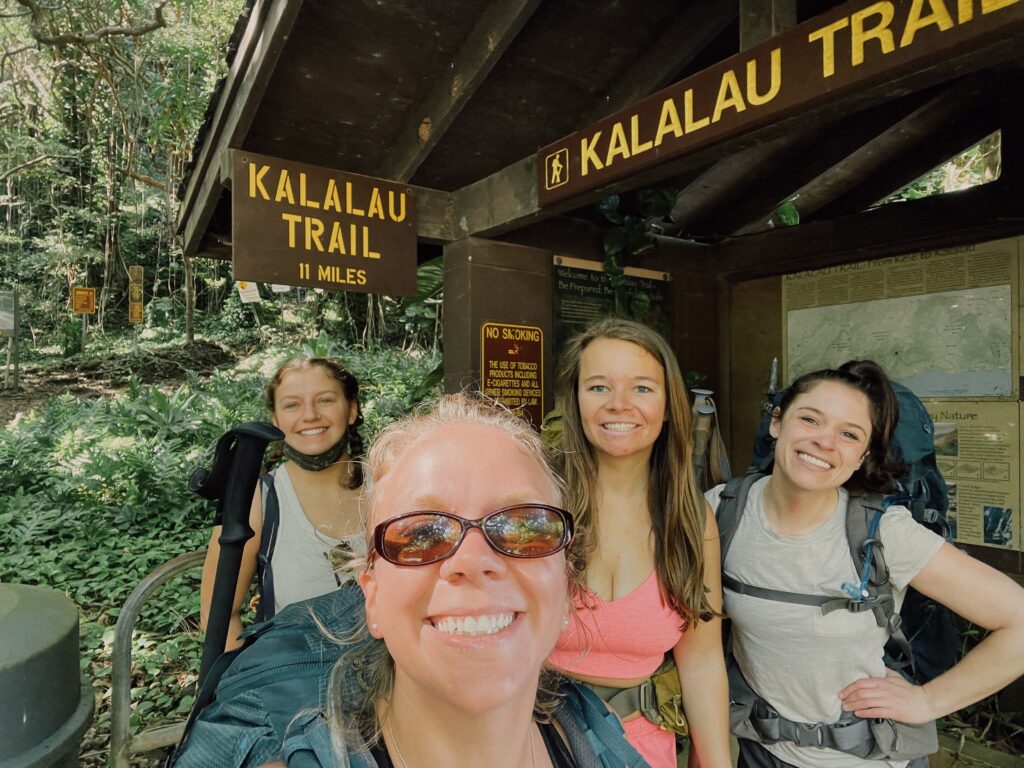
Kalalau Trailhead (Mile 0)
The Kalalau Trailhead is the starting point when backpacking Kauai. The trailhead starts just next to Ke’e Beach. At the trailhead, a Haena State Park employee will check your permits and brief you on camping and safety regulations.
You are likely to see many people starting to hike from the Kalalau Trailhead but most visitors only hike the first 2 miles of the trail and then turn back.
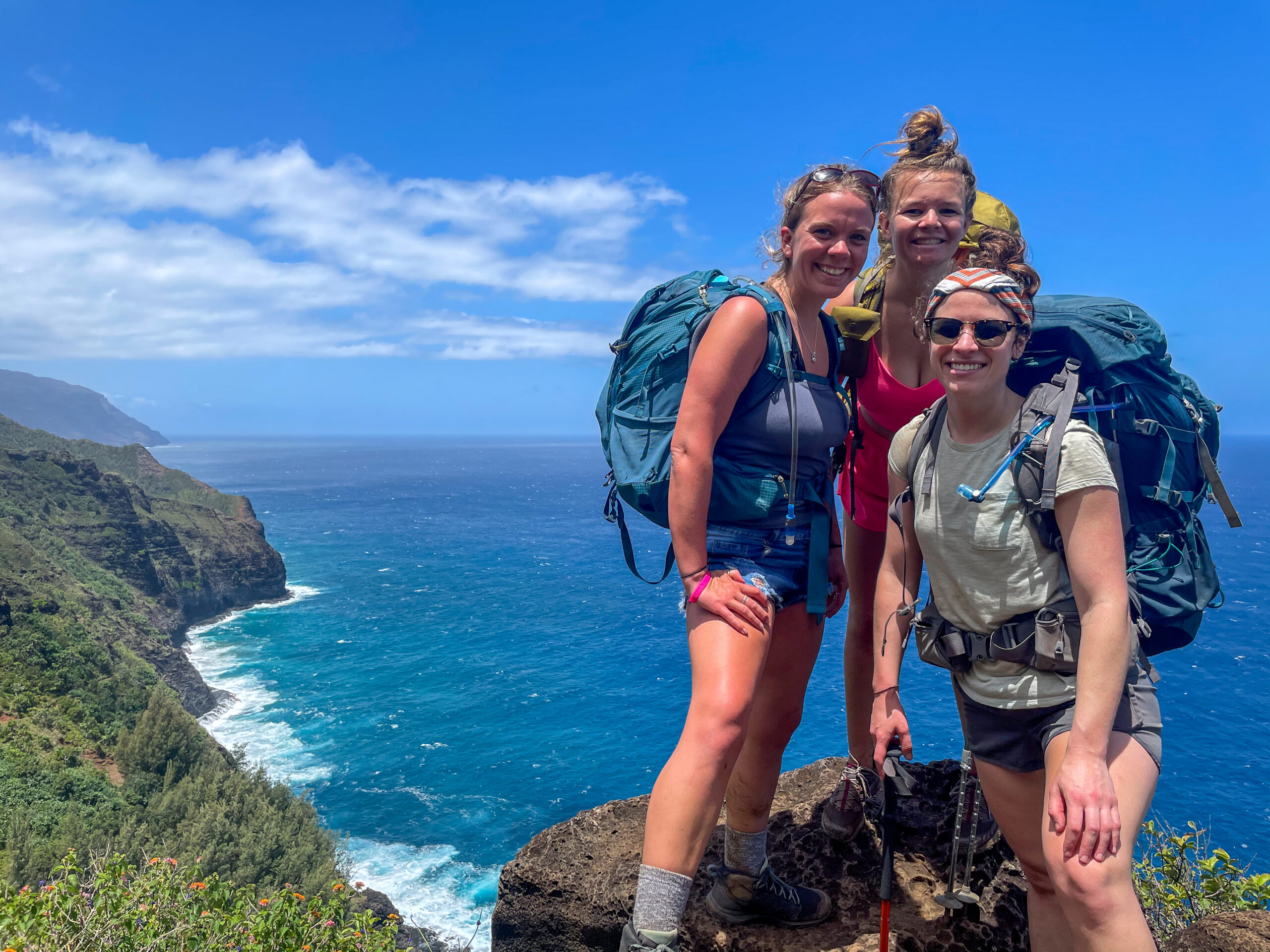
Napali Coast View (Mile 1.2)
Views are grand the whole time you’re backpacking Kauia however, the Napali Coast View, just over a mile in is one of the first grand viewpoints you get along the trail. Even if you’re just hiking to this viewpoint there’s still plenty of ups and downs along the way to get here.
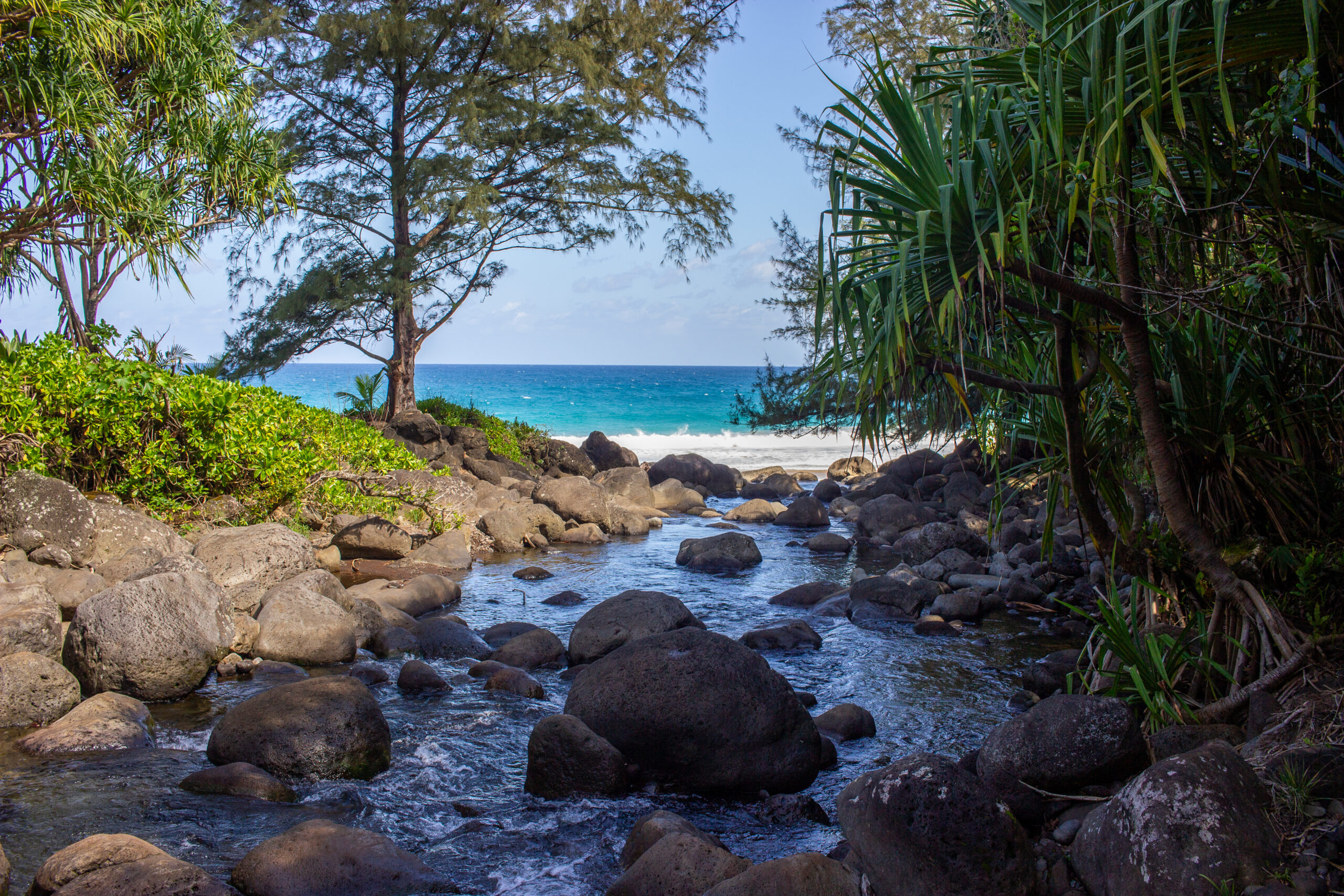
Hanakapi’ai Beach (Mile 2)
Hanakapiai Beach is 2 miles into the Kalalau Trail. It’s the first beach you can safely, and legally access. It’s also the turn-back point for anyone who is just day-hiking the Napali Coast. Even if you’re only day hiking the coast you need camping permits beyond Hanakapai Beach.
Hanakapai Beach is a lovely spot to take a break and relax on the beach while backpacking Kauai, but remember that you still have 9 miles to go from here if you’re trying to make it to Kalalau Beach in a day!
Hanakapiai Falls
If you want to add on a bit of hiking then hike up to Hanakapiai Falls. The trail to the falls is accessible from Hanakapiai Beach. Hanakapi’ai Falls is located 1.6 miles up the trail from the beach, so 3.2 miles round trip. The trail gains is steep, gaining almost 800 feet on the way up to the falls.
These beautiful waterfalls are definitely worth checking out if you’re spending a few nights backpacking the Napali Coast. You can stand at the base of the falls and bask in their beauty.
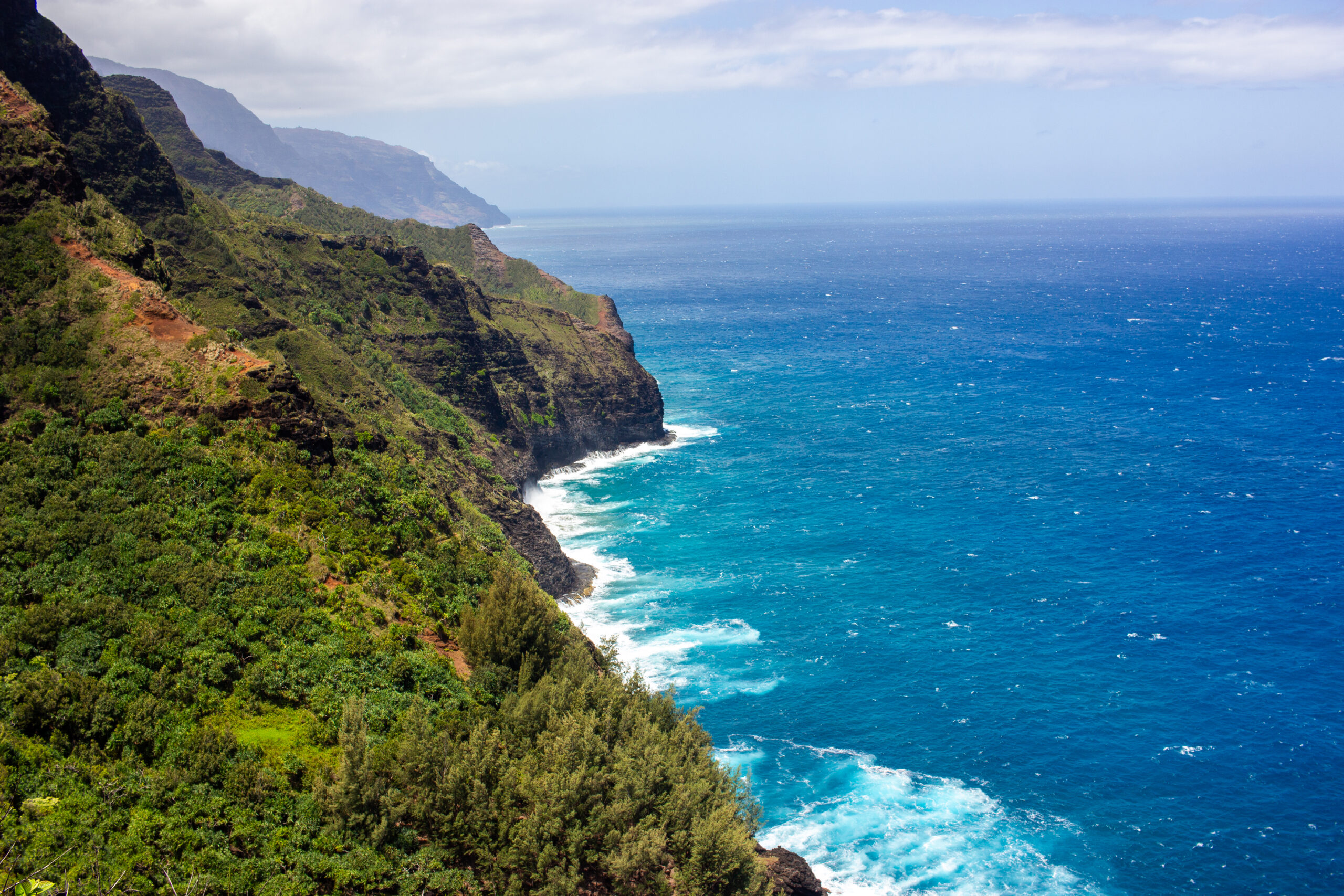
Hanakoa Valley (Mile 6)
At 6 miles in you’ll reach Hanaka Valley and Hanakoa Campground. This is the only other spot you can camp when hiking to Kalalau Beach. If you’re spending a few days backpacking Kauai then it’s definitely worth stopping here for a night on your way in, out, or both! It helps break up the trail distance, located just over halfway to Kalalau Beach.
From Hanakoa Valley you can hike a half-mile trail up to Hanakoa Falls if you choose to spend the night here.
The Hanakoa Campground has an established camping area and composting toilets.
Crawlers Ledge (just after mile 7)
The famous, or infamous, Crawlers Ledge is what spooks most people about the Kauia backpacking trip. Crawlers Ledge has listed the Kalalau Trail as one of the most dangerous trails in the world because the trail narrows along a steep, rocky cliffside, and 200+ foot drops into the ocean.
While I will say the trail narrows here the trail remains at least a foot and a half wide the whole way so it’s easily passable with careful footing. Of course, in a torrential downpour, this section of trail would feel much sketchier. As a group of gals comfortable with scrambling and rock climbing we had no issue or fears walking Crawlers Ledge – about a half mile before felt much sketchier where the loose dirt was sliding out under our feet on steep terrain.
However, if you are not very experienced in hiking along exposed terrain the Crawlers Ledge might really get to you. Just take a few deep breaths and look inward toward the cliffside. Take careful steps and remember to breathe the whole time.
I would recommend trying to pass Crawlers Ledge when it isn’t raining.
Also, if you watch YouTube videos shot on a GoPro these fisheye lens shots make Crawlers Ledge look a lot more sketchy and narrow than it actually is.
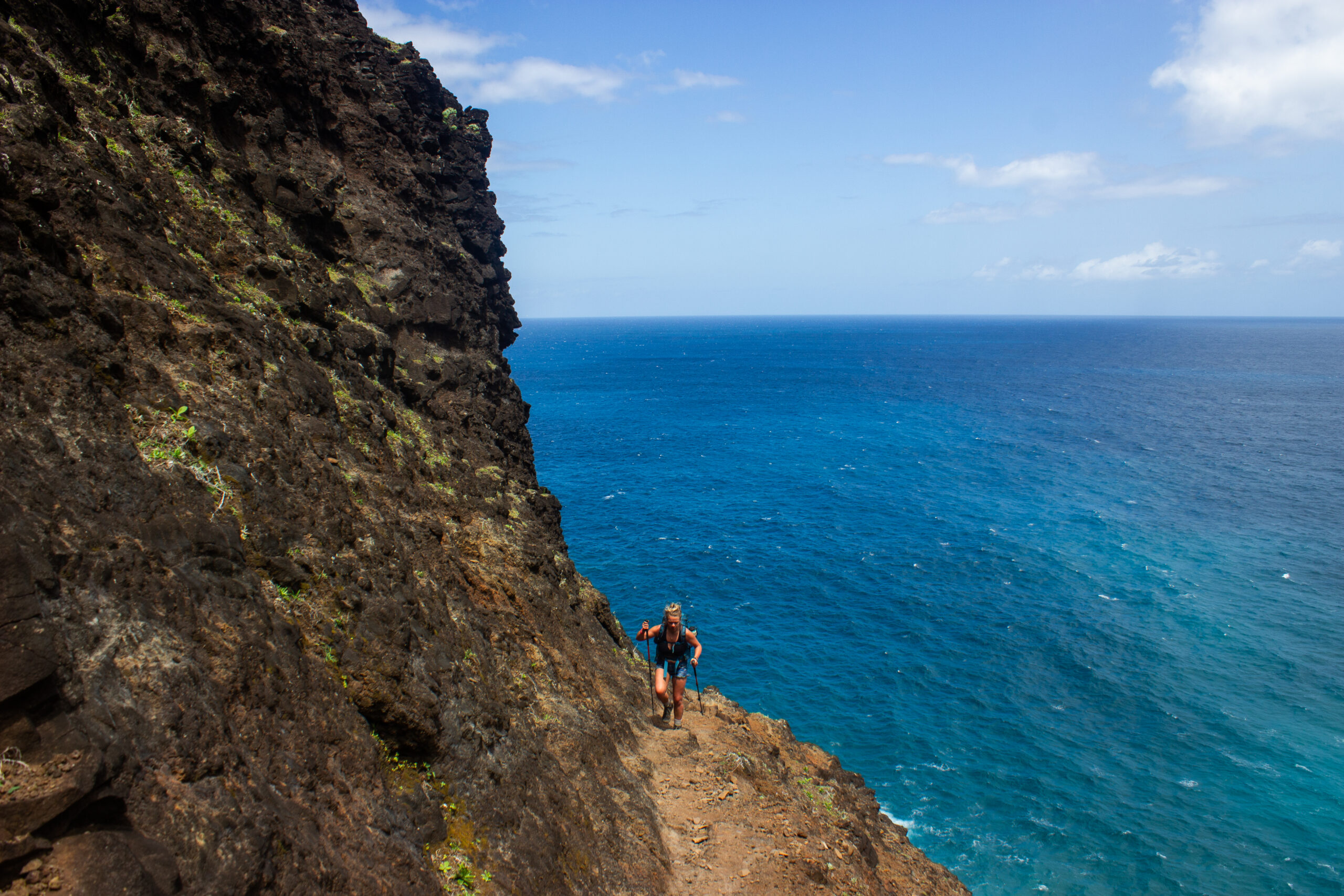
Kalalau Valley (mile 10)
Just about a mile before reaching Kalalau Beach to camp at. you’ll reach the Kalalau Valley. Approaching here you’ll have some of the most impressive panoramic views of the Napali Coast.
This section of trail sits higher looking out at the palm tree-lined Kalalau Beach with the lush green Napali Coast mountains lining the horizon. It’s simply stunning. And one of my favorite sections of the Kauai backpacking trail.
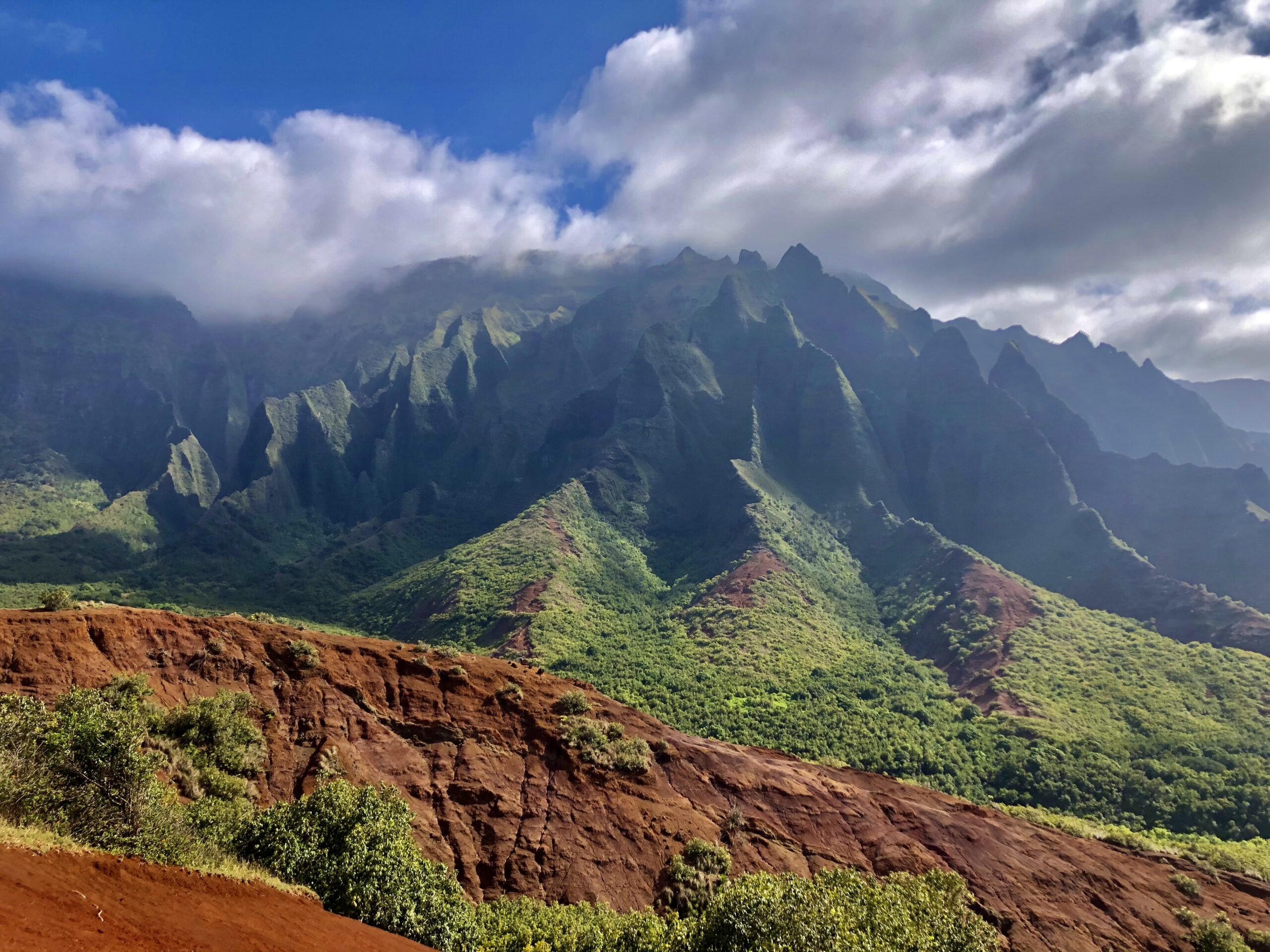
Kalalau Beach (Mile 11)
You have made it!! All the way to Kalalalu Beach! By now your knees are likely shaky, your thighs are aching, and your feet are sore. Well, luckily enough you can spend the rest of the evening relaxing on Kalalau Beach watching the sunset. Or if you brought a hammock, string that up in the trees and rest those tired legs.
Now, as you can tell from the description it is no easy feat reaching this point but it’s well worth it. Once you get here you can rest, set up camp, lie on the beach and relax, rinse off in Hoolea Falls, or wander around Honopu Beach during low tide.
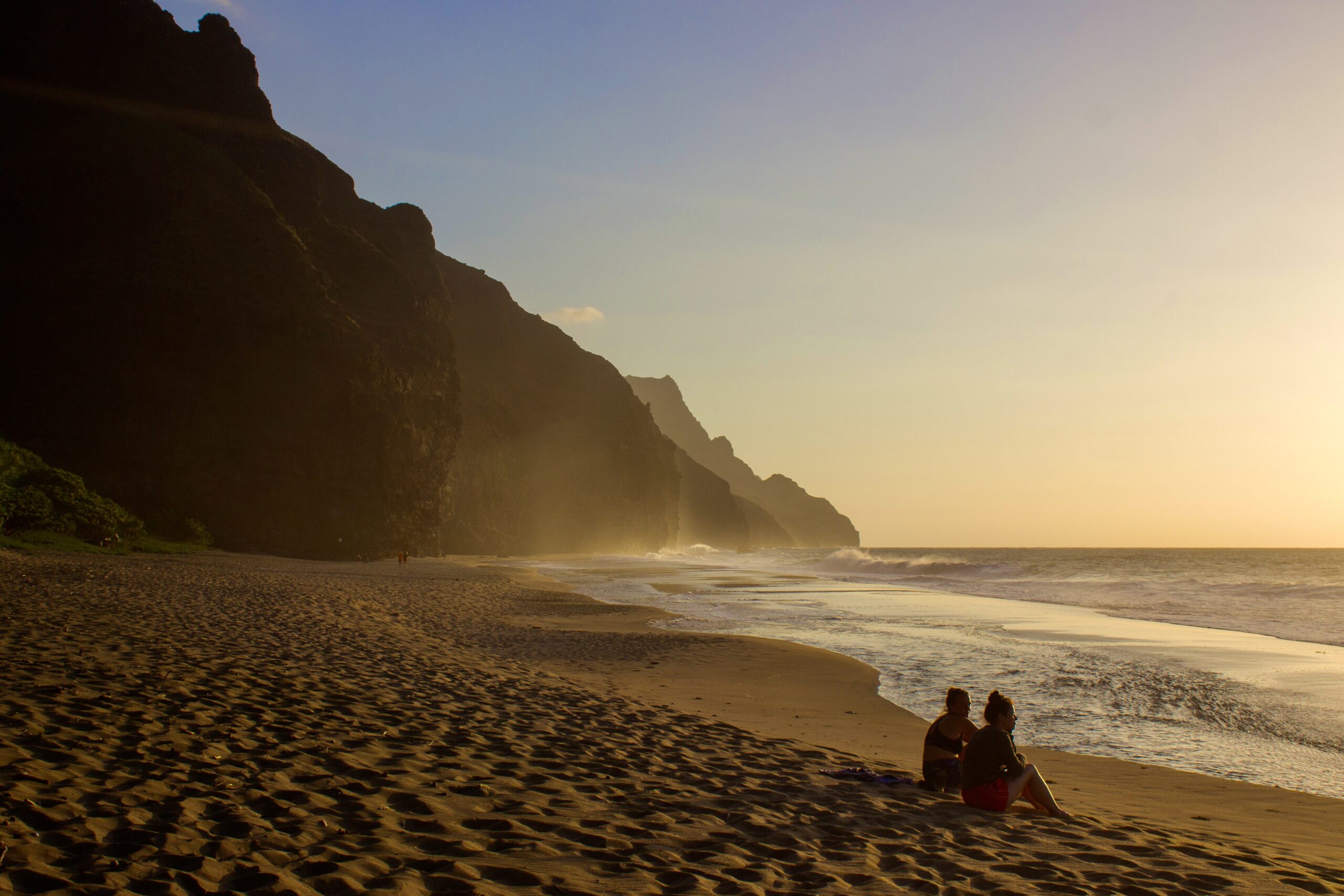
Hoolea Falls
Just about a half mile passed the camping area at Kalalau Beach is Hoolea Falls. They are small waterfalls but provide fresh water which you can filter for drinking. Many people also rinse off in Hoolea Falls as waves and tides at Kalalau Beach are too dangerous to swim in.
Honopu Beach
Continuing just past Hoolea Falls is Honopu Beach where the picturesque Honopu Arch and Honopu Valley lay. You can usually only access this area during low tide. Don’t cross over here during high tide because water levels are too dangerous at that point and can sweep you off your feet, or worse.
Hike Back
Whenever you decide to depart, you now have the 11-mile hike back out. Just like the hike-in, you’ll gain and lose another 3,000+ feet of elevation. If you have enough nights on your permit you can stay at Hanakoa Valley to break up the excursion on your way out.
What I wish we really did was spend 2 nights camping at Kalalau Beach. It was so beautiful I could’ve spent the whole day relaxing taking in the beauty and enjoying life there.
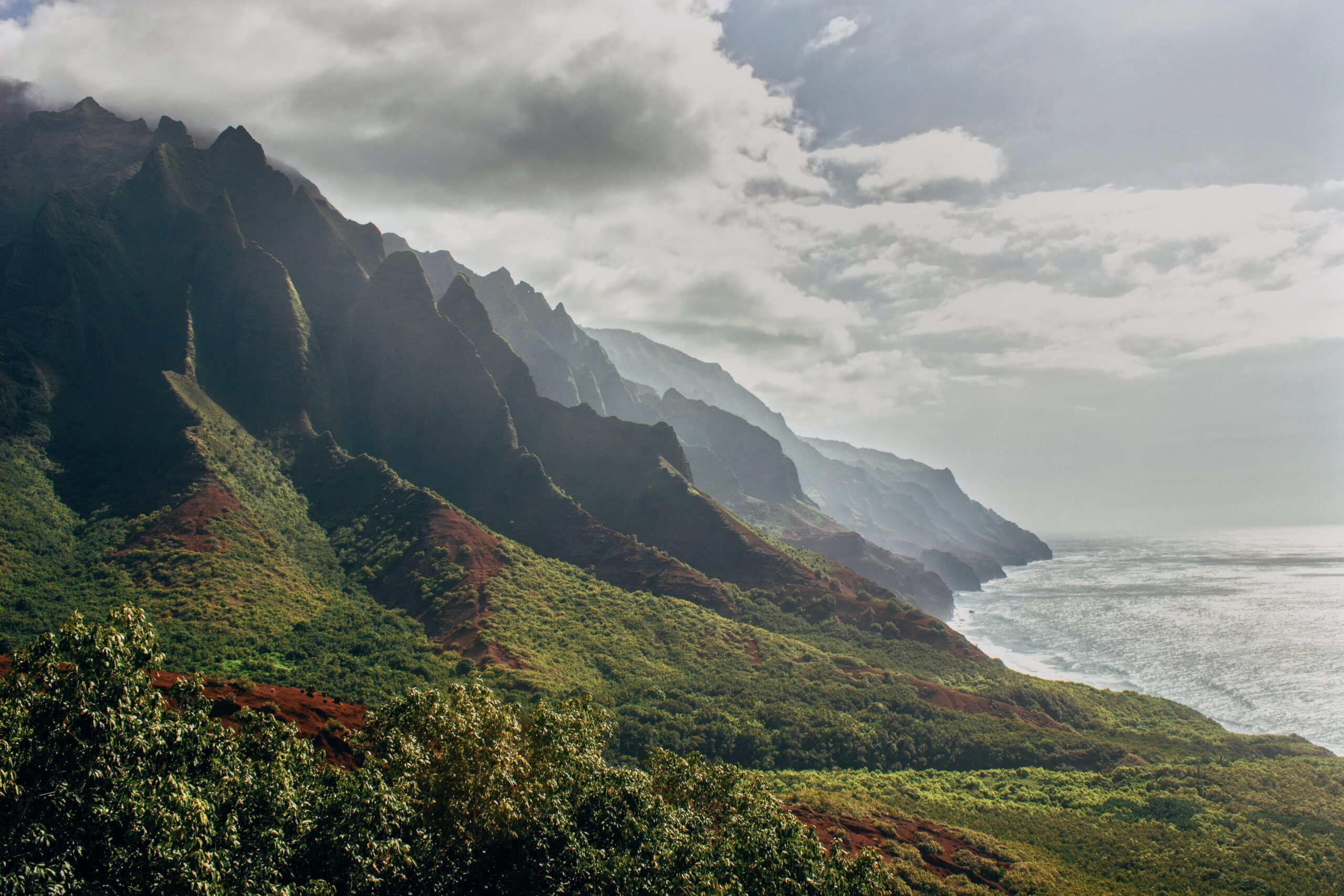
Backpacking Kauai Gear List
Here are a few essentials you don’t want to miss packing when planning a Kauai backpacking trip. I managed to pack everything in a carry-on backpack, even my hiking poles! (But I hear most people are stopped and have to check their hiking poles).
Backpacking Equipment
- 50 – 65L backpack
- Sleeping bag or blanket
- Tent or tarp
- Hammock
- Sleeping pad
- Trekking poles
- Headlamp
- Water filter
- Garmin InReach
- Paper & GPS map
- Permit (printed out)
Personal Gear
- First aid kit
- Headlamp
- Sunblock
- Bug spray
- Personal toiletries
- Sunglasses
- Sun hat
- Rechargeable battery pack
- Book
Cooking
- Camp stove
- Fuel
- Lighter or fire starter
- Camp pot/pan
- Camp bowl
- Mug
- Spork
- Pocket knife
- Biodegradable soap
- Meals
- Snacks
Clothing
- Rain jacket
- Fleece jacket
- Sun hoodie
- Tank top
- Bathing suit
- Athletic shorts
- Hiking socks
- Sturdy hiking shoes
- Sandals or camp shoes
Backpacking Kauai Tips
The trails in Hawaii are different than many other places. Here are a few logistical, safety, and camping tips to help your Kauai backpacking trip run smoothly.
Timing
- Start your hike early! You’ll avoid the crowds who day hike to Hanakapiai Beach and you get to choose your preferred campsite!
- Spend at least two nights at Kalalalu Beach. We only spent one night backpacking Kauai but wish we had at least two. It would have been nice to lie on the beach all day reading a book and taking in the views.
- You can only spend five nights camping in total in Napali Coast State Park.
- Do not cross streams during flash flooding. If it’s raining and the stream water turns brown the stream crossings are highly dangerous. It’s best to wait out the flood, even if that means spending an extra night camping for safety purposes.
- Park management is understanding if you have to spend an extra night due to flash flooding.
- Flash flooding is the most prevalent during the rainy season. I had a friend get stuck an extra night because the stream crossings were way too sketchy. These were two 6’5″ athletic guys who didn’t risk the dangerous crossing.
Safety
- Don’t swim in the ocean along Kalalau Beach – stick to streams and waterfalls. The ocean is unforgiving with dangerous shore breaks, large surf, and riptides. It’s tempting to jump in at Kalalau Beach but it’s unfortunately the site of many drownings.
- Mountain goats frequent the cliffside of the Napali Coast. When walking around cliff ledges it’s not uncommon to see rocks fall from the sky. It’s the mountain goats – watch out!
- There is no helicopter service to take you out if you’re tired. We met a girl with a swollen, sprained ankle who couldn’t walk. It took 3 days until a helicopter picked her up and it was a pricey feat.
- Break in your hiking shoes before you head out. Blisters suck. But are still common so carry blister care and prevention in your first aid kit.
Camping
- There is no cell service, trash service, or potable drinking water along the Napali Coast. When backpacking Kauai pack out all waste and carry a water filter to treat stream water.
- Campgrounds are located a short distance from fresh stream water that you can filter.
- There are composting toilets near the campgrounds.
- Go to the bathroom at least 100 feet from any freshwater sources and the trail – remember, that freshwater stream is your drinking water.
- Only use biodegradable soap if you bring any. Wash yourself and dishes at least 100 feet from any water sources.
- Pack as light as you can! The more you pack the more you carry on your back which gets really tough on this challenging terrain.
- The Kalalau Trailhead has drinking water, bathrooms, and outdoor showers (which are especially convenient when you finish hiking).
